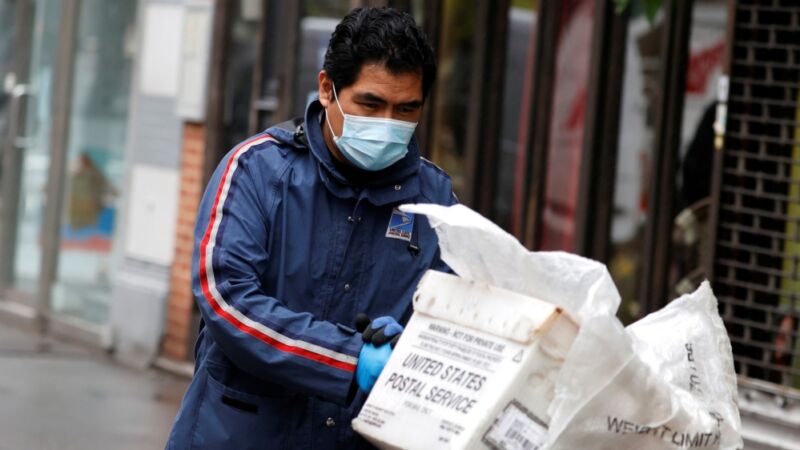How can banks and other financial institutions help protect their customers from increasing incidents of check fraud or check theft?
In an era when seemingly all financial transactions are going digital, it’s ironic that fraud involving old-fashioned paper checks is also making a resurgence. However, according to the Financial Crimes Enforcement Network (FinCEN), the U.S. Treasury’s investigative arm, reports of check fraud have more than doubled over the past three years.
In February, FinCEN issued an alert indicating that there were 680,000 cases of possible check fraud reported last year, up from 350,000 in 2021, which itself was a 23% increase over reports in 2020. Because FinCEN sees no indication that check fraud is going to subside anytime soon, the agency cautioned financial institutions to be vigilant and, along with the United States Postal Inspection Service (USPIS), warned that the main source of stolen checks is the U.S. mail.
“Criminals committing mail theft-related fraud generally target the U.S. mail in order to steal personal checks, business checks, tax refund checks, and checks related to government assistance programs, such as Social Security payments and unemployment benefits,” FinCEN’s alert warns, adding that business checks are the most valuable to criminals because “business accounts are often well-funded, and it may take longer for the victim to notice the fraud.”
Criminal interest in paper checks began to grow during the pandemic, when millions of government relief checks were being mailed through the U.S. Postal system and resources for anti-fraud enforcement were overwhelmed. This created a target-rich environment for check thieves, and when pandemic aid ended, their interest expanded to all kinds of checks.
Indeed, check fraud has become such a problem in the past few years that the U.S. Postal Service (USPS) has advised citizens not to mail checks if they don’t have to — and if they must, to hand deliver the check at a post office. Because thieves often steal checks from standalone USPS mailboxes, home mailboxes, and PO boxes in apartment buildings, caution is advised, even though the USPS insists that most mail is still delivered without incident.
Check washing and kiting
Once thieves have obtained an uncashed check, they may employ a variety of tricks to extract the money. For example, the most popular method is a technique called check washing, in which thieves use a solvent to remove the ink on a check, then change the dollar amount and recipient.
In order to cash the check, criminals may also need to steal a person’s identity or forge a driver’s license or passport. To cash a business check, for instance, criminals may need to create a fake business, open an account in that business’s name, then deposit the check into the bogus business account. Washed checks are also sold online on the dark web, along with matching fake IDs.
Another method of check fraud, called check kiting, exploits the float time it typically takes for a bank to verify account funds. In a simple check-kiting scheme, someone opens an account at two different banks, then writes a check from one account to the other and cashes it out from the second account before the fraud is discovered. Other check-kiting schemes are more elaborate, involving multiple banks and accounts and a series of revolving checks, usually aimed at establishing credit to obtain a loan.
In any case, check fraud has become so lucrative that the perpetrators aren’t necessarily lone actors; rather, they are often connected to sophisticated criminal enterprises that traffic in multiple types of fraud. These crime rings steal mail in bulk from post-office boxes, sometimes robbing postal carriers at gunpoint, bribing them, or stealing the master arrow keys that open USPS collection boxes. The criminals then sort through the mail, take whatever checks they find, then create forged or synthetic IDs to cash or sell them.
Banks and postal officials have difficulty preventing check fraud because it exploits vulnerabilities in the traditional banking system. Among these weaknesses is that checks usually contain a great deal of personal information: names, addresses, phone numbers, driver’s license numbers, bank account numbers, etc. — all of which can be exploited online by criminals using encrypted and untraceable messaging apps.
The challenges of prevention
Preventing check fraud is an ongoing challenge for financial institutions and law enforcement.
Requiring all transactions to be digital might seem like an easy and obvious solution, except that many small businesses still use paper checks, many Social Security recipients still prefer receiving their checks, and as popular as online banking is, not everyone trusts banking via electrons. Cash-transfer apps such as Zelle and Venmo are more secure and their popularity is soaring, especially among young people — but again, not everyone has a smartphone or computer.
Other fixes are possible, but they all take time and money. For example, the USPS is retrofitting collection boxes in 12,000 high-risk areas to make unauthorized access more difficult, but there are 139,409 USPS collection boxes in use around the country, so protecting them all would be prohibitively expensive. Bank personnel could also be trained better to spot bad checks, but today’s forged checks are often so convincing that they can temporarily fool even the most experienced bank professionals.
And it’s not as if there are no safeguards in place already. For example, checks issued from reputable institutions typically have watermarks that are difficult for forgers to duplicate, and some use reactive paper that alerts banks when a check has been altered. And for years banks have been encouraging businesses to use positive pay services, which automatically compare an image or information about the check sent by the business with the actual check to make sure they match.
As with all forms of fraud, the best defense may be public awareness of the problem. Financial institutions and law enforcement regularly hold community information sessions and hand out materials informing citizens about the dangers of fraud. Organizations such as the AARP also keep their members informed about the latest scams targeting seniors, and regularly publish articles about all types of fraud, including check fraud.
In the long run, however, it seems inevitable that paper checks will be phased out. But in the meantime, the millions of people who still use them should be aware of the dangers and take precautions to protect themselves against theft, forgery, and financial loss.
For more information on how businesses and financial institutions can protect themselves against all kinds of fraud, the Association of Certified Fraud Examiners has a number of free resources available, including a fraud-prevention check-up for businesses and a Fraud Risk Management Guide complete with interactive teaching tools.







